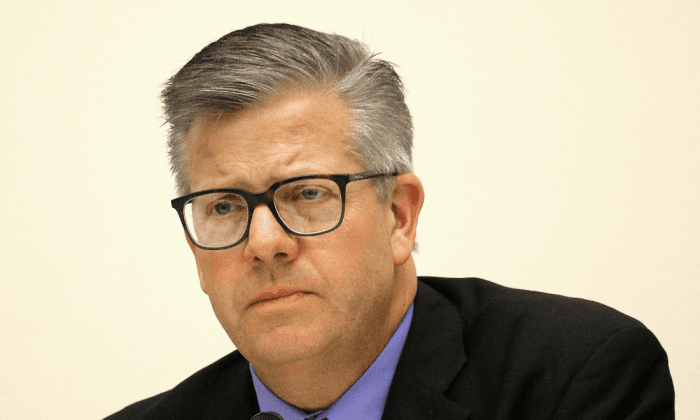Consumers report their intention to spend a little more this holiday season than they did for the 2009 season, according to a national survey by the Consumer Federation of America (CFA) and the Credit Union National Association (CUNA).
“Economic insecurity, weak labor markets and heavy debt load will have consumers spending very, very cautiously this year,” said Mike Schenk, CUNA senior economist, at the National Press Club on Nov. 22.
The scientific survey was conducted Nov. 11-14 and asked 1,011 consumers about their holiday spending plans this holiday season and their financial situation today.
Compared to last year, 10 percent said they would increase their spending, which is larger than last year’s 8 percent who said they would increase spending. Further, fewer said they would decrease their spending this year (41 percent) than last year (43 percent).
Improvements in Financial Situation
Other findings reported by Schenk show improvement in consumers’ financial situation; these comparisons between this year and last year were statistically significant.
The survey found that financial situation for the respondents has improved since last year. Twenty-three percent said it was better versus 19 percent from last year, and this improvement could explain the increase in percentage saying they will spend more.
More importantly, the percentage of consumers saying their situation is worse fell from 36 percent to 30 percent this year. Only 8 percent that said their financial situation was “much worse,” compared to 14 percent last year.
By comparing this survey with previous CFA/CUNA surveys, it was found that concern for the economy may be on the decline. One-fourth of consumers cited “the economy or concern about it” as factoring in spending decline. In 2008 and 2009, the percent was higher, both years at 36 percent.
Schenk concluded from these data, “Respondents are apt to tell us they are going to spend a little bit more because they feel a little bit better about their financial situation.”
The survey also reports that 47 percent, nearly half the population, intends to spend about the same as last year.
Thus, combining the responses, 57 percent say they will spend the “same” or “more” than last year, an improvement of 3 points from last year. While that is welcome news, this number of 57 percent is “low by historical standards,” said Schenk. In the eight years prior to the Great Recession that began in 2008, the average percent for respondents answering “more” or the “same” was 68—11 points higher than today’s number.
Before 2008, the beginning of the Great Recession, consumers were about twice as likely to prefer the response of spending less to spending more. Since 2008, the preference is four times as great for less spending over more.
The Poor and Middle-Age Americans Hit Hardest
Looking at average responses can hide important information for special categories, such as the response from the nation’s poorest citizens.
The data for the “poor,” defined as low-income families with annual wages below $25,000, are quite different from the averages cited above. Thirty percent intend to spend “much less” than last year, compared to 19 percent of the total population. Forty-four percent say their financial situation is worse, compared to 30 percent in the population.
Among middle-aged Americans, defined by ages 45-54, the consensus is a bit more pessimistic compared to other age groups. Their percent response to spend less, 51, is substantially larger than the population’s average of 41 percent.
Schenk said, “In all, 87 percent of those in [the middle-age] group carry debt, and they are much more likely than their peers in other age groups to hold mortgage debt and to have credit card balances.”
One important survey finding that particularly impacts the poor and middle-age group is a new attitude about paying down debt.
All respondents were asked the question: “If you received an unexpected windfall of $5,000, how would you most likely use most of it?”
Nearly half of consumers, 47 percent, said they would pay down some debt. This proportion is higher than last year’s 41 percent and also higher than all previous years.




Friends Read Free